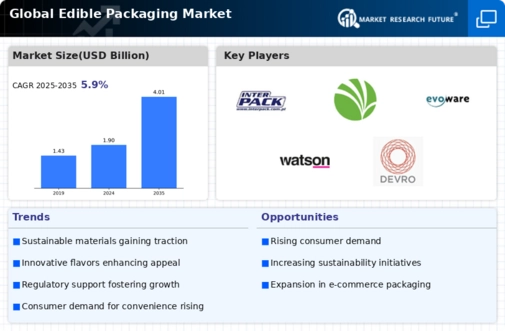Market Analysis
In-depth Analysis of Edible Packaging Market Industry Landscape
The food service industry is taking steps toward research departments to incorporate edible packages into their product lineups, which include containers wrapping paper instead of plastic sachets. The business environment has been witnessing dynamic shifts in recent years caused by increased demand for sustainable methods, among many other things. The global drive towards sustainability has been one significant driver behind these dynamics, which have resulted in various changes in the Edible Packaging Market globally. Governments, on the other hand, have started taking steps towards reducing the use of single-use plastics, often forcing companies to think about making alternatives. Consequently, edible packaging made from materials such as seaweed, starch, and proteins has become more popular. As a result, businesses are now striving to meet all their customers' expectations and adhere to several important regulations, thus making it possible to develop a favorable environment for Edible Packaging Market growth. Consumer behavior also plays an important part in shaping the dynamics of this market. In addition to rising environmental awareness levels, consumers are increasingly looking for products with minimal ecological footprints. This change in preferences has forced companies to adopt edible packaging solutions so as to stay ahead of competitors. Technological advancements are another factor influencing the market dynamics of edible packaging besides sustainability and consumer preferences. Researchers and innovators are developing new materials and technological developments on a daily basis with the aim of improving various aspects related to functionality and safety requirements associated with edible packages. It may involve advancements in preserving foodstuff by ensuring that the packaging keeps food quality and freshness safe. These advantages not only lead to a faster rate of growth but also address some initial doubts concerning feasibility or practicability when it comes to using edibles as wrappers. The edible packaging market, however, does not come without its teething troubles. These include issues such as scalability, cost, and the need for widespread acceptance. For various companies operating in the edible packaging market, these are problems that they will have to address in order to be able to marry sustainability with practicality. The future of the Edible Packaging Market is looking bright. More research and development addressing current technology gaps and even inventing new ones would increase innovation and adoption of new solutions.









Leave a Comment